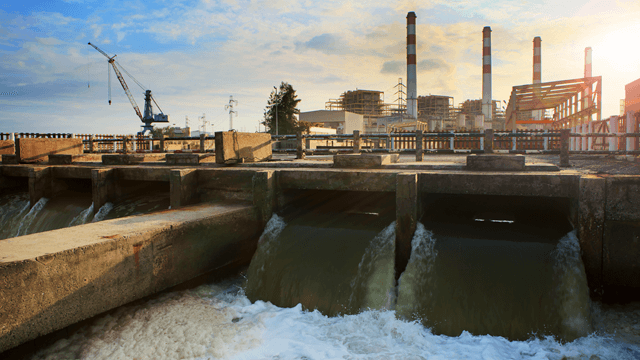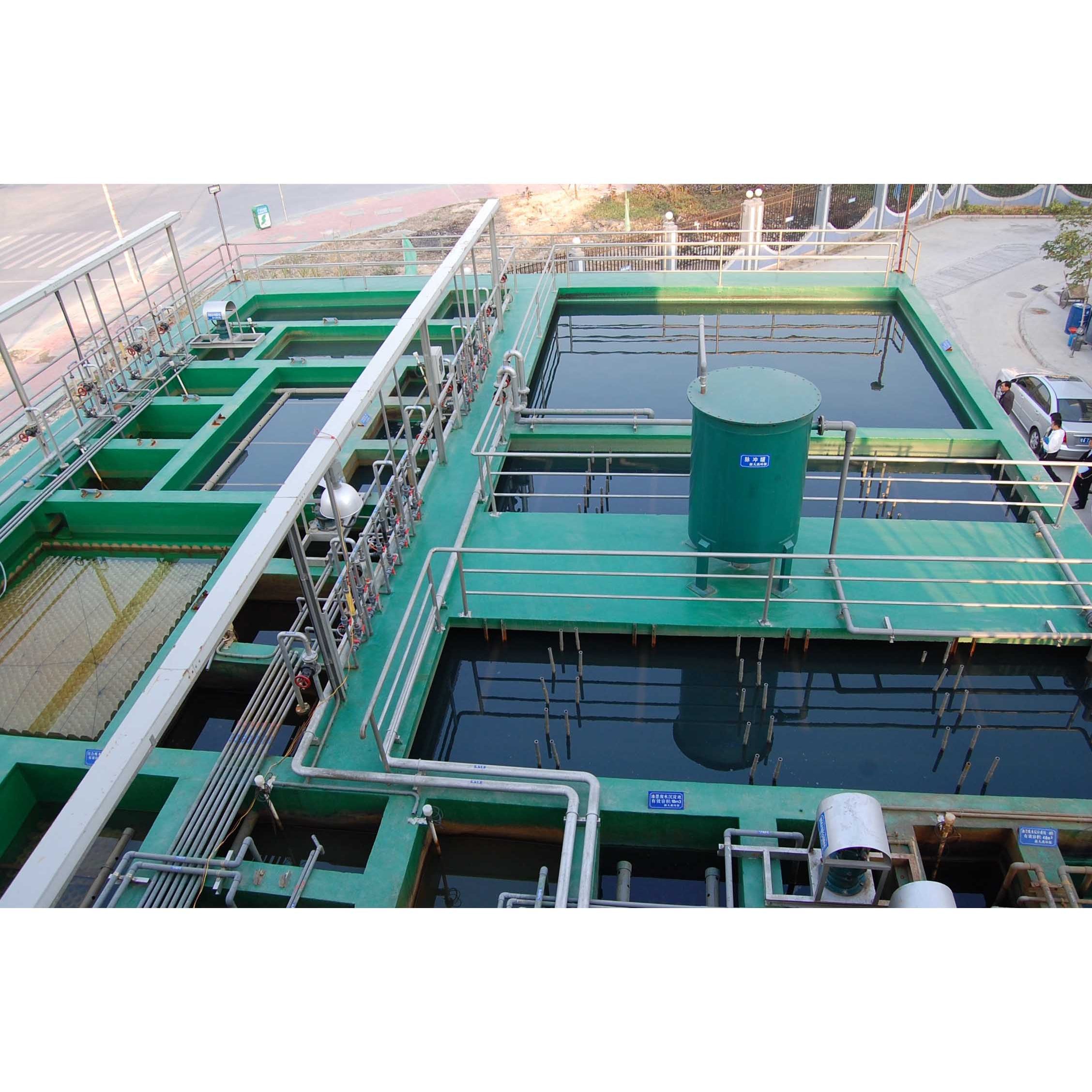Industrial Waste Water Treatment-- Tailored Solutions for Effective Wastewater Treatment
Industrial Waste Water Treatment-- Tailored Solutions for Effective Wastewater Treatment
Blog Article
Technologies and Advancements in Hazardous Waste Water Treatment Technologies
The landscape of industrial wastewater therapy is going through a transformative shift, driven by innovations that boost both performance and sustainability. As governing criteria progress, the combination of AI and equipment understanding into wastewater administration systems promises to simplify procedures and make sure compliance.
Review of Waste Water Therapy Technologies
Wastewater treatment technologies include a variety of techniques created to remove impurities from commercial effluents before their launch into the environment. These innovations are critical for preserving eco-friendly balance and making sure compliance with environmental guidelines. The key groups of wastewater therapy include physical, chemical, and biological approaches, each serving distinct functions based upon the nature of the impurities present.

Organic therapy methods utilize bacteria to break down raw material, making them especially effective for organic-rich effluents. Methods like triggered sludge and biofilm reactors harness the all-natural destruction abilities of bacteria, leading to considerable decreases in biochemical oxygen need (FIGURE)
Advanced Filtration Techniques
Advanced filtering techniques represent a vital development in the world of commercial wastewater treatment, enhancing the effectiveness of pollutant removal procedures. Industrial Waste Water Treatment. These approaches encompass a variety of innovations, consisting of microfiltration, ultrafiltration, nanofiltration, and reverse osmosis, which supply sequential barriers for different fragment sizes and chemical structures
Microfiltration and ultrafiltration make use of membrane layer systems to get rid of put on hold solids, microorganisms, and larger natural particles, boosting the quality of effluent previous to further treatment. Nanofiltration connects the void between ultrafiltration and turn around osmosis, properly removing natural compounds and divalent ions, therefore lowering the tons on downstream procedures.
Reverse osmosis uses the highest degree of purification by permitting only water and little molecules to pass via its semi-permeable membrane layers, making it optimal for reclaiming high-grade water from industrial effluents. Recent improvements in membrane innovation, consisting of the growth of more fouling-resistant and resilient products, have actually substantially boosted functional performance and lowered costs.
Integrating these innovative purification strategies not just boosts the general treatment process yet also adds to sustainability initiatives by allowing water reuse and source recuperation in industrial settings. (Industrial Waste Water Treatment)
Organic Treatment Advancements

In addition, the advancement of crafted organic systems, such as membrane bioreactors (MBRs), integrates organic therapy with sophisticated membrane layer purification. This assimilation permits greater effluent quality and reduced impact, making it appropriate for space-constrained commercial facilities. Technologies in genetically engineered microorganisms have likewise arised, enhancing the biodegradation of certain contaminants, such as pharmaceuticals and heavy metals, that are commonly challenging to remove.
Additionally, the implementation of bioaugmentation methods, where helpful germs are presented to boost the existing biological therapy procedures, has actually revealed encouraging results in enhancing therapy efficiency. These innovations jointly signify a pattern towards more sustainable and reliable biological therapy techniques that can adjust to the advancing complexities of industrial wastewater streams. As industries continue to focus on ecological conformity, these organic developments will play a critical role in wastewater monitoring.

Source Recovery Approaches
In commercial setups, the integration of source recovery approaches has come to be increasingly essential for boosting sustainability and lessening waste. These methods focus on extracting useful products and energy from wastewater streams, therefore transforming potential toxins into reusable sources.
One popular technique is nutrition recuperation, where nitrogen and phosphorus, usually present over in wastewater, are captured and transformed into fertilizers. This not just reduces environmental influences however also offers a round economic situation solution for agricultural applications. In addition, technologies such click for more info as anaerobic digestion enable the conversion of organic waste into biogas, an eco-friendly energy resource that can counter fossil fuel use in industrial operations.
In addition, progressed filtration and membrane technologies assist in the healing of commercial byproducts such as salts and steels. These recouped products can be rehabilitated right into manufacturing procedures, lowering the demand for virgin sources.
Future Trends in Waste Water Management
As industries increasingly focus on sustainability, the future of wastewater monitoring is readied to go through considerable improvements. Technological developments, such as synthetic intelligence and equipment understanding, will enable extra effective monitoring and monitoring of wastewater systems. These innovations can predict upkeep requirements, optimize treatment procedures, and improve decision-making, ultimately minimizing operational prices and important link environmental effect.
Moreover, the combination of round economic climate concepts will play a critical role in wastewater administration. Industries are anticipated to shift in the direction of systems that not just deal with wastewater but likewise recoup valuable resources, such as nutrients, water, and energy. This change will minimize waste and promote the reuse of products, straightening with worldwide sustainability goals.
Emerging treatment methods, such as membrane layer bioreactors and progressed oxidation procedures, will certainly better boost the performance of wastewater therapy, allowing for higher quality effluents suitable for reuse. Furthermore, regulatory frameworks are most likely to advance, highlighting stricter standards for wastewater discharge and motivating sectors to embrace ingenious treatment remedies.
Verdict
In conclusion, the development of industrial wastewater treatment innovations demonstrates a considerable shift towards enhanced efficiency and sustainability (Industrial Waste Water Treatment). Advancements in sophisticated filtering techniques, biological therapies, and source recuperation techniques highlight the market's commitment to ecological stewardship.
The landscape of commercial wastewater treatment is undergoing a transformative shift, driven by innovations that boost both effectiveness and sustainability.Wastewater treatment modern technologies incorporate a range of approaches created to other remove impurities from commercial effluents prior to their release into the setting.Utilizing the power of biological procedures has led to substantial advancements in the treatment of commercial wastewater.Additionally, the application of bioaugmentation strategies, where helpful microbes are introduced to enhance the existing biological treatment processes, has actually shown promising outcomes in enhancing therapy performance. These advancements collectively symbolize a fad towards even more sustainable and effective biological therapy methodologies that can adapt to the advancing complexities of industrial wastewater streams.
Report this page